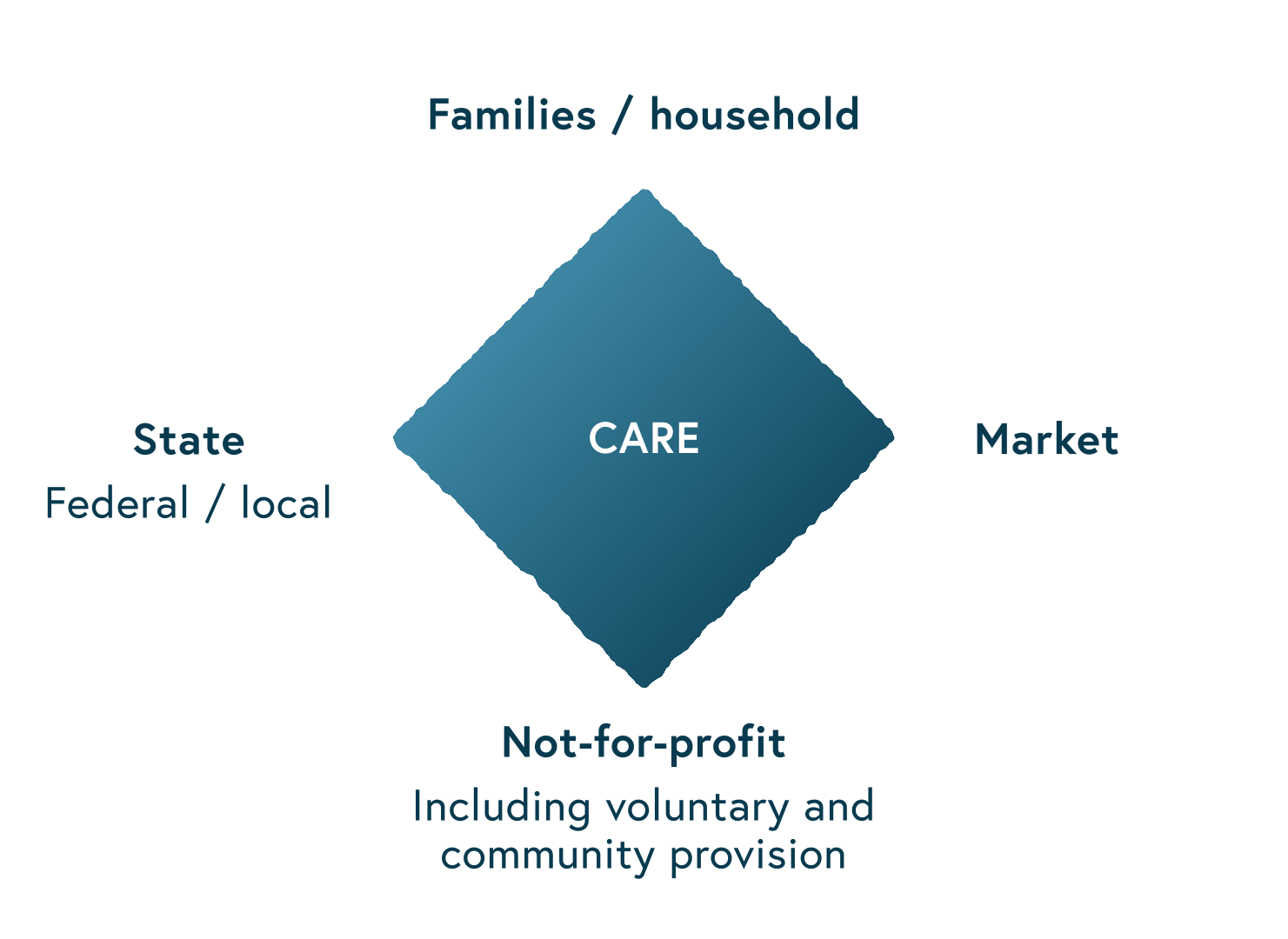GENDER GAPS IN (RE)PRODUCTIVE ECONOMY
2.5
Care work: the invisible backbone of societies and economies
Reproductive work refers to care work that contributes to the well-being of family groups and society in general. In this article, we will see the importance of care work for social development and economic growth, and thus the need to formulate public policies that address the issue of care. To this end, we will draw on the concepts of care economy and the care diamond.
Care work consists of both direct care tasks (such as looking after children, the elderly, people with physical and mental illnesses or disabilities) and indirect care tasks, or daily domestic work (such as cooking, washing or cleaning). Care work can be paid (as in the case of domestic workers or care workers such as teachers and nurses) or unpaid when performed at the household or community level (ILO, 20181; OXFAM, 2020).
However, care work remains mostly unpaid and invisible. Moreover, given the persistence of the gender division of labour, women and girls perform the majority of the care work. Unpaid care work is therefore a determining factor in the insertion of women in the labour market and in the quality of the jobs they can access.
The concept of care economy encompasses precisely all the tasks that fall under the category of unpaid care work. Through this notion, we can associate the idea of care with the idea of the economy, highlighting that unpaid care work produces or helps to produce economic value. Furthermore, this type of work contributes to economic growth through the reproduction of a fit and able workforce (UNRISD, 2010). Recognising the crucial role and value that care work has for society and the economy is the first step in making it visible and accounted for in policy processes (Esquivel, 20132).
Considering that care underpins both social and economic development, it needs to be addressed through public policy. In this sense, the concept of the care diamond helps us recognise which institutions are involved in the design, funding and delivery of care (UNRISD, 2010).

The Care Diamond
The care diamond illustrates that care responsibilities are distributed across four different pillars: households and families, the state, the market and the not-for-profit sector. The state plays a particular role in this scheme, since it not only acts as a care provider, but also as a decision-maker. This means that the state has the ability to influence the rights and responsibilities of the other pillars.
By implementing care policies (such as those aimed at creating, regulating and financing care services), it is possible to reduce the time and material burdens on unpaid caregivers. It is important to pay attention to the design of such policies to avoid exacerbating gender inequities in the distribution of care (Esquivel, 2013; UNRISD, 2010).
Related links
Downloads
